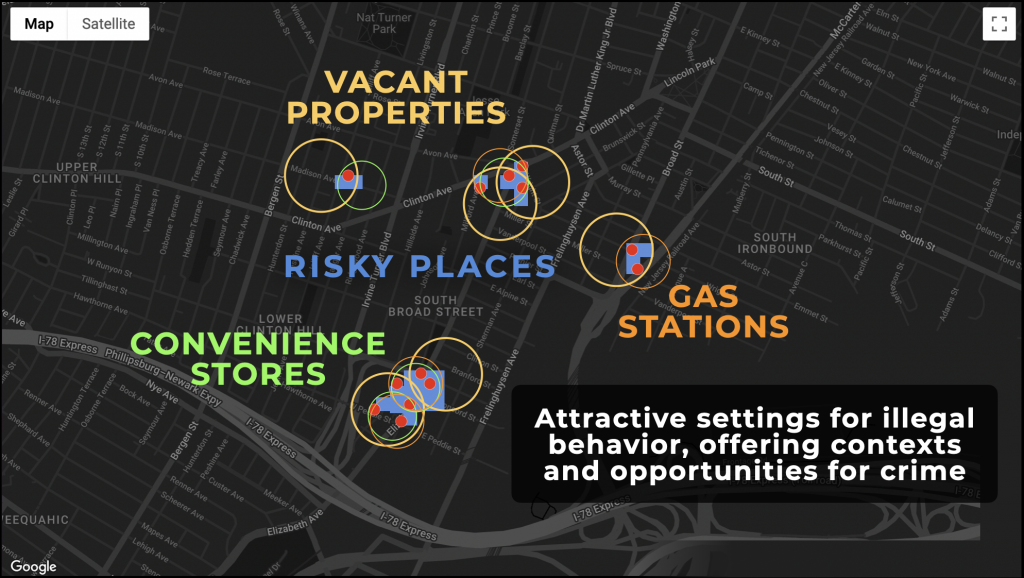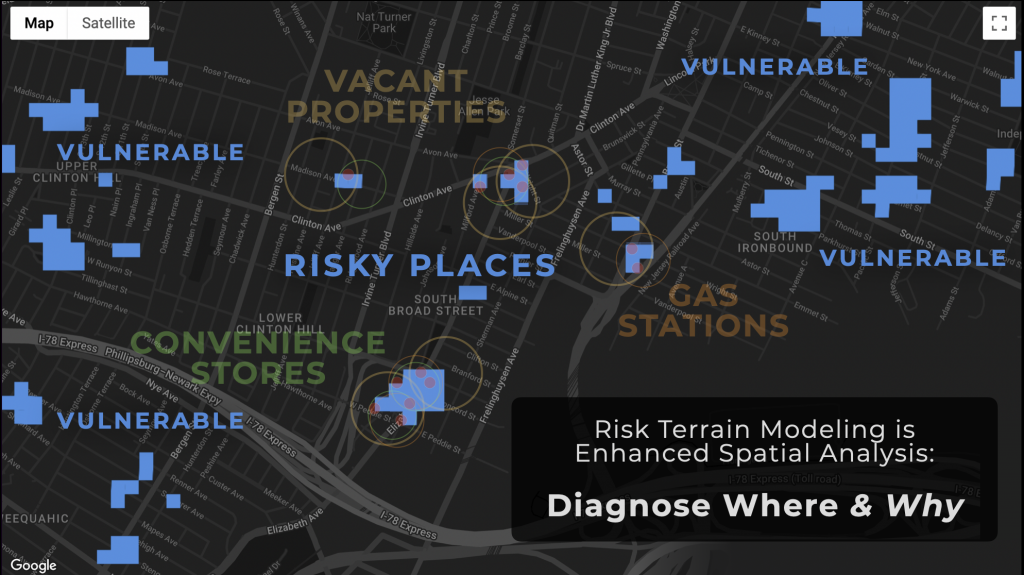Risk terrain modeling (RTM) is risk assessment for places. It’s a data analysis technique. And, it’s a diagnostic tool. When used for crime analysis, RTM identifies environmental conditions that contribute to crime problems. Different crime incident locations can have common underlying causes. That is, events may be unrelated, but attractive settings for them may share similar qualities. RTM sheds light on why crimes pattern the way they do. It puts the focus on places, not people.
As shown in the graphics below, RTM analyzes the spatial patterns of crime incidents by linking the built environment to criminal behaviors that result in crime outcomes. Raw crime data becomes more meaningful. Diagnosing crime patterns with RTM lets you accurately anticipate where and why problems will emerge or persist.


RTM represents a culmination of over 40 years of rigorous research, systematic investigation, fieldwork and professional experience. It has been independently proven and tested in dozens of jurisdictions around the world. It has a proven track record with successful outcomes reflecting community priorities. A growing bibliography of this work is maintained by the Rutgers Center on Public Security. The book, Risk Terrain Modeling: Crime Prediction and Risk Reduction, offers transparency under-the-hood and presents a detailed discussion on how RTM is used to deploy services, programs and resources to places that need them most.
